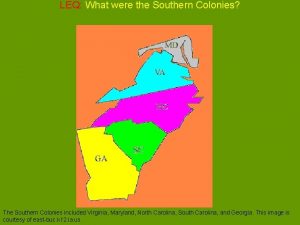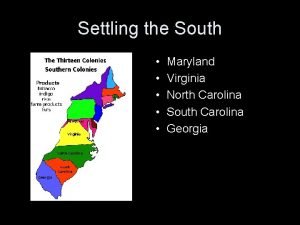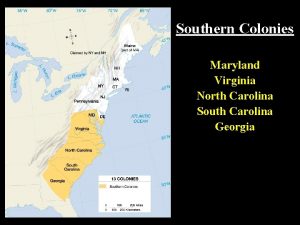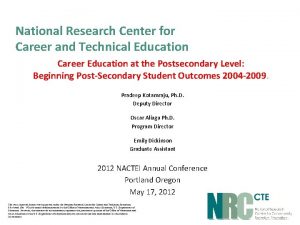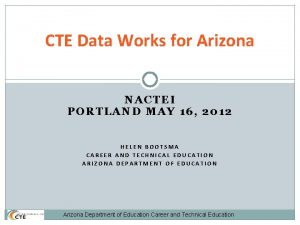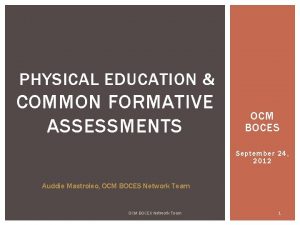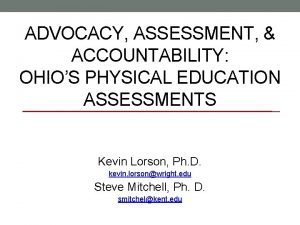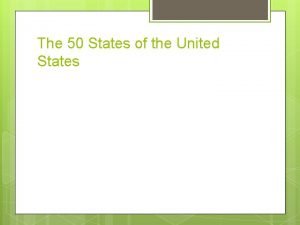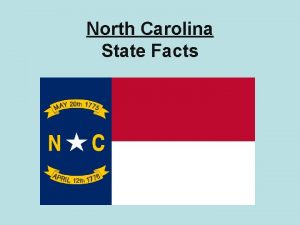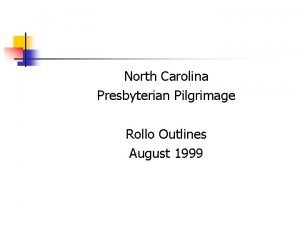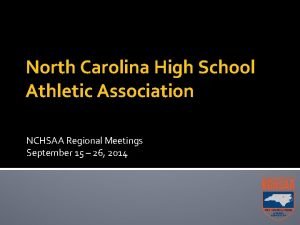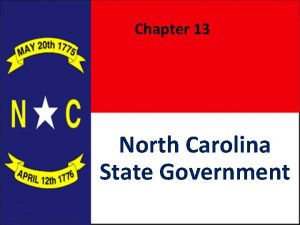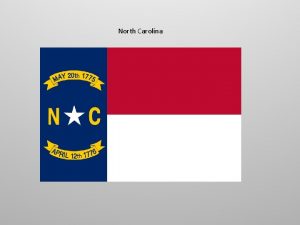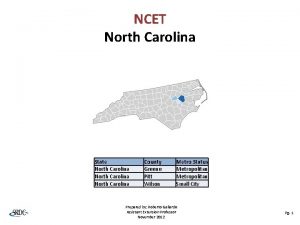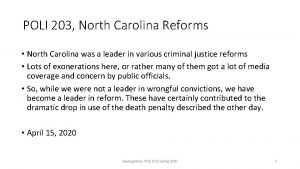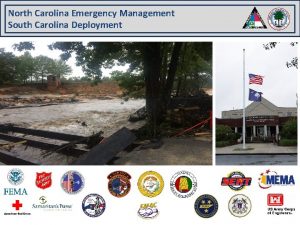North Carolina Career Technical Education Assessments Using Assessment


















- Slides: 18

North Carolina Career Technical Education Assessments: Using Assessment and Data for Continuous Growth and Improvement Tammy Howard, Ph. D Director, Accountability Services North Carolina Department of Public Instruction

General Overview of the System • 215 Courses at the State Level • 215+ End of Course Assessments • Ability to Deliver Assessments Online or Paper/Pencil • System to Capture and Validate Credentials and Certifications 2

Vision and Concept • System Initially Designed in the Early 1990’s • Originally Conceptualized as a Method to Reward Teachers for Continuous Improvement • Recognized Nationally as Model for Formative and Summative Assessment • Aligned to Carl D. Perkins Career and Technical Education Act Technical Attainment Performance Indicators 3

Assessment Models • Types of Test Item Banks – Field Test – Classroom (Teacher – Formative) – Secure (Accountability – State End-of-Course) • Types of End-of-Course Summative Assessments – Developed – Adopted – Industry-Based • Pre- and Post-Assessment Model • EVAAS 4

Curricular Alignment • All Courses in NCCTE are required to have: – “Blueprints” of Essential Instructional Standards Aligned to: – Instructional Content Aligned to: – Formative Assessment Aligned to: – Summative Assessment 5

Validity, Reliability, and Analysis • Validity Required for All Secure and Classroom Test Items • Reliability Study Required for Each New Assessment • Data Analysis Performed at State and District/Local Level • State-level Item Analysis • Scale Scores Determined After Reliability and Item Analysis 6

Growth Analysis • In the early 1980 s, the EVAAS approach to measuring growth was founded at the University of Tennessee Knoxville by Dr. William Sanders • Revolutionized the way educators and policymakers viewed schooling effectiveness and the ability of students to make growth • In 2006, EVAAS was implemented statewide as a school improvement resource. • In 2012, EVAAS became a formal part of North Carolina’s teacher evaluation and accountability after recommendation by West. Ed and UNC researchers. 7

How is growth measured? • Predictive-based model – Based on students’ prior testing history • all previous tests for which correlation has been established • Students must have three prior test scores in any grade/subject – What is the difference between students’ expected score and observed score? • Use all available testing history for each student to minimize impact of measurement error • Use standard errors to address uncertainty inherent in any growth model and protect against misclassification 8

Inclusion in Growth Model (EVAAS) Each CTE assessment must have sufficient: • Stretch in the scales – To measure growth of both high- & low-achieving students – No floor or ceiling effects • Reliability in the scales – Preferably have at least 40 -50 test questions per subject/grade/year • Number of districts/schools/teachers administering test – Preferably 25 at each level 9

Inclusion in Growth Model (EVAAS) Each CTE assessment must have sufficient: • Correlation with curricular objectives • Predictive relationship – Results of each CTE test must be related or correlated with results of other tests from different grades/subjects – i. e. prior math or reading test scores and the CTE test score were not strongly related for Carpentry, but they were for Biomedical Technology 10

EVAAS Reporting • Dozens of reports for use in school improvement – Reflective analytics, such as value-added and diagnostic reports for districts, teachers and schools – Proactive analytics, such as student projections – Comparison reports, such as value-added summary and scatterplots • Roster verification for the student-teacher linkages in teacher value-added reports • Help supports, such as video clips, online ticketing system, and help pages • Available through a secure web application with customized access 11

Sampling of CTE Assessments Receiving EVAAS Reporting • 50 CTE assessment met criteria for inclusion in growth model Source: http: //www. dpi. state. nc. us/docs/effectiveness-model/evaas/resources/vam-assessments. pdf 12

13

14

15

16

17

For More Information…. Contact: Trey Michael - trey. michael@dpi. nc. gov Tammy Howard - tammy. howard@dpi. nc. gov Tomberlin thomas. tomberlin@dpi. nc. gov 18
 Georgia, south carolina, north carolina, virginia, maryland
Georgia, south carolina, north carolina, virginia, maryland What is this image
What is this image Virginia, maryland, north carolina, south carolina, georgia
Virginia, maryland, north carolina, south carolina, georgia Virginia, maryland, north carolina, south carolina, georgia
Virginia, maryland, north carolina, south carolina, georgia National research center for career and technical education
National research center for career and technical education Cteig grant
Cteig grant Cte technical skills assessments.azed.gov/student
Cte technical skills assessments.azed.gov/student Common formative assessment examples
Common formative assessment examples Physical education assessments examples
Physical education assessments examples North carolina sunshine laws
North carolina sunshine laws North carolina's state motto
North carolina's state motto North carolina victim assistance network
North carolina victim assistance network Packingham v. north carolina
Packingham v. north carolina South carolina state bird name
South carolina state bird name North carolina presbyterian pilgrimage
North carolina presbyterian pilgrimage South carolina state shell
South carolina state shell North carolina high school athletic association basketball
North carolina high school athletic association basketball Famous landmarks in nc
Famous landmarks in nc Face jugs north carolina
Face jugs north carolina

